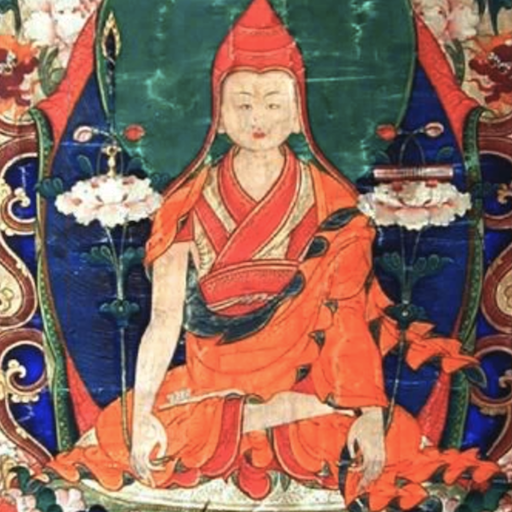
We can apply the Three Supreme Methods1དམ་པ་གསུམ་ = also known as the Three Noble Principles – see: dampa sum. to ensure that all that we do, both in our practice and during work and other post-meditation activity, is directed towards enlightenment. They are also known as “good in the beginning, good in the middle, good in the end”. According to Patrul Rinpoche in The Words of My Perfect Teacher (from the section “The Proper Way to Listen to the Spiritual Teachings”):
- Good in the beginning: Before beginning, arouse the bodhicitta as a skilful means to make sure that the action becomes a source of good for the future;
- Good in the middle: While carrying out the action, avoid getting involved in any conceptualization, so that the merit cannot be destroyed by circumstances;
- Good in the end: At the end, seal the action properly by dedicating the merit, which will ensure that it continually grows ever greater.
The Three Supreme Methods are referred to in a popular quotation from Longchenpa:
“Begin with bodhichitta, do the main practice without concepts,
Conclude by dedicating the merit. These, together and complete,
Are the three vital supports for progressing on the path to liberation.”
The following brief practice to apply the Three Supreme Methods in work or other post-meditation activity was composed by Dzongsar Khyentse Rinpoche.
Work as Practice: Applying the Three Supreme Methods
1. Motivation: begin with bodhichitta
To apply the Supreme Methods, begin by refining your intention, thinking that you will perform the work for the sake of all sentient beings as you say the following:
Today I vow to work for the benefit of all beings.
May I be a guard for those who are protectorless,
A guide for those who journey on the road.
For those who wish to go across the water,
May I be a boat, a raft, a bridge.
Before beginning a day of volunteer work students should recite the following prayer:
Even the remembrance of your name dispels the hope and fear of nirvana and samsara. To walk the path to enlightenment, I take refuge in the Buddha, Dharma and Sangha. Following all the bodhisattvas of past, present and future, may I emulate their infinite activity to free beings from suffering. Eventually may there be continual joy in the activity of helping others. In that aim, I shall begin by offering my energy and time today to … {Quietly say to yourself the activities that you intend to offer today. For example, “cleaning the teaching hall”}
2. Do the main practice without concepts
To apply the second wholesome attitude, avoid the pride that shadows your good intention and say:
Whatever I do today is ultimately just a concept. Relatively, there is a necessary structure just as there is in dreams. In my night-time dreams, my eyes are shut; still, I see. Whatever I see is an illusion. There is nothing to see and no-one seeing. But in the relative world of the dream, the construct of “the way to see” is still needed. So I shall do my job as properly as possible.
3. Dedicate the merit
The third wholesome attitude is applied by dedicating the merit with the following2The dedication is verse X:55 from Shantideva’s Bodhicharyavatara.:
And now as long as space endures,
As long as there are beings to be found,
May I continue likewise to remain
To drive away the sorrows of the world.
Dzongsar Khyentse Rinpoche spontaneously offered this liturgy during the 2005 retreat at Sea to Sky Retreat Centre. During the 2009 retreat, the wording was slightly revised. The dream example for the second wholesome attitude was composed at Khyentse Labrang in January 2013.
Artwork: Longchenpa (artist unknown)
Page last updated: August 11. 2023